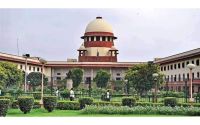E-Courts: The Future of Judiciary in India

E-Courts: The Future of Judiciary in India
India’s judiciary is at a crossroads, with digitization and judicial reforms paving the way for increased efficiency, transparency, and accessibility. The e-Courts initiative, launched by the Indian judiciary under the National e-Governance Plan (NeGP), is a transformative step toward modernizing the country’s legal system.
What is the e-Courts Project?
The e-Courts project aims to provide ICT-enabled services to litigants, lawyers, and the judiciary. It includes the establishment of digital infrastructure in courts, enabling electronic filing (e-filing), virtual hearings, and online access to case information.
Launched in 2007, the initiative is being implemented in three phases:
- Phase I (2007–2015): Focused on computerizing district and subordinate courts and providing basic digital infrastructure.
- Phase II (2015–present): Introduced e-filing, case status portals, and video conferencing facilities.
- Phase III (2021 onwards): Emphasizes judicial process automation, artificial intelligence, and an open data policy.
Key Features of E-Courts
- Online Case Management Systems:
Litigants and lawyers can view case statuses, cause lists, and judgments online, ensuring transparency and reducing physical visits to court. - E-Filing and Virtual Hearings:
Documents can be filed digitally, and virtual courtrooms allow hearings via video conferencing, saving time and resources. - Digital Case Records:
Court records are being digitized to ensure easy access and prevent document loss. - Integrated Online Payment:
Enables litigants to pay court fees and fines digitally.
Benefits of E-Courts
- Enhanced Accessibility:
Rural litigants and those with limited mobility can access judicial services online, reducing disparities in access to justice. - Efficiency:
Digitization speeds up case management, reducing the pendency of cases—a significant issue in India’s overburdened judiciary. - Transparency:
Online case tracking enhances trust in the judicial process by making case information publicly available. - Cost-Effectiveness:
Virtual hearings and e-filing reduce the expenses associated with physical court visits.
Challenges in Implementation
- Digital Divide:
Limited internet access and technological literacy in rural and underprivileged areas hinder the widespread adoption of e-Courts. - Data Security:
Protecting sensitive judicial data from cyber threats is a critical concern. - Resistance to Change:
Traditionalists within the legal fraternity may resist adopting new technologies. - Infrastructure Gaps:
Many courts still lack adequate digital infrastructure and trained personnel.
The Way Forward
- Capacity Building:
Training programs for judges, lawyers, and court staff will facilitate smoother adoption of e-Courts. - Public Awareness:
Outreach initiatives to educate litigants about the benefits and use of e-Courts can bridge the digital divide. - Robust Cybersecurity Measures:
Implementing stringent data protection policies will safeguard sensitive information. - AI Integration:
Leveraging artificial intelligence for predictive case management, legal research, and decision support can revolutionize the judiciary.
Conclusion
E-Courts represent a monumental leap toward a more accessible, efficient, and transparent judiciary in India. While challenges persist, a phased approach to implementation, coupled with investments in digital infrastructure and public awareness, will ensure the judiciary evolves in tandem with technological advancements.
The e-Courts initiative is not just a step forward; it’s the foundation for a judicial system that is future-ready, equitable, and just.
Post Categories
Featured Posts
Latest Posts
Latest Posts

Section CrPC 'Right To Remain Silent Not Be Used Against Accused' Supreme Court Summarises...
Recently the Supreme Court in a noteworthy judgment while acquitting a woman accused of killing her own child and was convicted for murder and sentenced to life imprisonment also decided the question of what may be required of the convict...

Repatriation of Funds and Investments Legal Guidelines for NRIs...
For Non-Resident Indians NRIs repatriating funds and investments back to their country of residence is a crucial aspect of financial management However navigating the legal landscape can be complex Here are essential guidelines NRIs should follow to ensure smooth and...

Delhi pollution Supreme Court seeks report from Centre's air quality panel...
The Supreme Court on Tuesday sought a report from the Commission for Air Quality Management CAQM on the steps being taken to control air pollution in and around Delhi The Supreme Court on Tuesday sought a report from the Commission...

Startups and Legal Compliance A Guide to Navigating Indian Laws...
Navigating legal compliance is crucial for startups to establish a strong foundation and ensure sustainable growth In India understanding and adhering to applicable laws can be complex but essential Here rsquo s a concise guide to help startups stay compliant...

Stop Misleading Advertisements Will Impose Rs Crore Cost On Every Product Claiming False Cure...
The Supreme Court on Tuesday November reprimanded the Patanjali Ayurved for continuing to publish misleading claims and advertisements against modern systems of medicine While considering a petition filed by the Indian Medical Association against misleading advertisements the bench comprising...

Legal Challenges in Cryptocurrency and Blockchain Exploring the Evolving Legal Landscape...
The rise of cryptocurrencies and blockchain technology has revolutionized the financial world but it has also brought about a series of complex legal challenges As more businesses and individuals adopt digital currencies and decentralized systems governments and regulatory bodies are...

Speak With Our
Get a Appointment
















